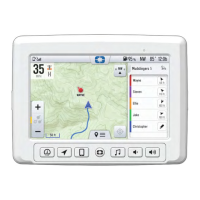• While Airborne:
Rebound damping is
reduced to promote
shock extension while
compression is
increased to 100% to
ensure a nice plush
landing.
• After Landing:
Rebound damping is
increased to stabilize the
landing and prevent loss
of wheel traction or
hopping of the vehicle.
The damping application is biased based on airborne duration so the vehicle has
optimized performance in large airborne events and small airborne events like
whoops. As the vehicle is airborne longer, the compression damping will
gradually increase to maximize the bottom out performance when landing.
EXAMPLE MANEUVERS
• Large whoops that cause an airborne event
• Glamis jumps
• Short course race jumps
• Jumps
56
DYNAMIX DV ACTIVE SUSPENSION (IF EQUIPPED)

